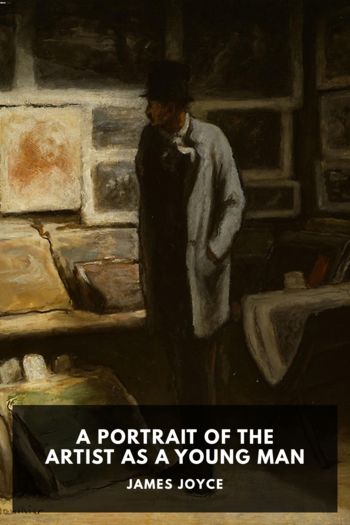Mrs. Keppel and Her Daughter, Diana Souhami [the ebook reader TXT] 📗

- Author: Diana Souhami
Book online «Mrs. Keppel and Her Daughter, Diana Souhami [the ebook reader TXT] 📗». Author Diana Souhami
with their grey walls, red lacquer cabinets, English eighteenth-century people in their red coats, huge porcelain pagodas [a gift from Bertie] and thick, magnificent carpets, but the hostess conducted the running of her house as a work of art in itself …
From Bond Street she bought Old Masters, china, cut-glass candelabra, chandeliers. The dining room seated seventy. Her Angora cats matched the carpets. Twice as many servants as in Portman Square lived in the basement area.
Mrs Keppel’s suite was on the first floor, George’s on the floor above. All the old Portman Street furniture went into his rooms: screens, chaises-longues, leather chairs, his photos of ‘masses of beautiful ladies with well-developed bosoms and tiny waists’. Sonia’s and Nannie’s rooms and the schoolroom were on the second floor, too. Violet and Moiselle had the floor above. Violet’s sitting room was converted out of an attic.
Mrs Keppel, her social confidence unimpaired, resumed her life of bridge, visiting and choosing the menus. In March 1912 she retrieved her daughters from Germany. Sonia was to be despatched to London, Violet to Paris. From the Grand Hotel Heidelberg Violet wrote to Vita that she ‘would suffocate with rage’ if she did not see her in Paris. She was eighteen and it was time for her to ‘come out’ into society. Mrs Keppel bought her brassieres, corsets, chic clothes, got her hair curled, her nails manicured. On this metamorphosis much money was spent. Vita wrote to Harold Nicolson, who was in Constantinople and to whom she was unofficially engaged: ‘My erratic friend Violet Keppel is coming home in April so you will know her; I am so glad. She will amuse you more than anybody.’
‘After a month in Paris, who would have recognized the Bavarian Backfisch?’ Violet said:
Patiently, tirelessly, my mother dealt with my appearance, item after item; complexion, hair, figure, clothes, adding here, subtracting there. A whole quartier concentrated on my uninviting person.
Mrs Keppel’s coming back and her daughter’s coming out were to dazzle Grosvenor Street and Berkeley Square.
NINE
Mrs Keppel ‘determined to give Violet a wonderful season’ whether she wanted one or not. Life at 16 Grosvenor Street focused on entertaining, parties and who was getting married to whom. Ostensibly it was all for her daughter’s sake. Each day she would say ‘So and So’s engagement was in The Times this morning’. Her table, Sonia wrote, was graced by
exquisite beauties like Zia Torby and Diana Manners and Bridget Colebrooke and Vi de Trafford. And romantic young men like John Granby and Charles Lister, and Julian and Billy Grenfell.
Violet did not enjoy herself. She seemed ‘much less gay than she had done in Munich’. On her own admission she cared for no one in England but Vita. Men thought her too acerbic, too clever. She sprinkled her conversation with phrases in French and German, alluded to her painting classes and love of Wagner and scared the ‘pink and white’ young men introduced as putative husbands.
All agreed she could be very amusing, a good mimic, and that she sparkled when she chose. She liked dancing – particularly the foxtrot and tango. But at heart she found her mother’s social world intolerable. It brought with it constraints, hypocrisies and obligations of a sort she hated but was not strategic enough to defy. These were the people who by virtue of their wealth and class were society – royalty, politicians, beauties – but she was not attracted to their lives. Vita, too, rejected them as role models and satirized them in her novel The Edwardians:
their conversation seemed to consist in asking one another what they had thought of such and such an entertainment and whether they were going to such and such another … investments bulked heavy in their talk, and other people’s incomes, and the merits of stocks and shares;… These are the people who ordain the London season, glorify Ascot, make or unmake the fortunes of small Continental watering places, inspire envy, emulation and snobbishness … they spend money, and that is the best that can be said of them.
Mrs Keppel invited three hundred people to Violet’s coming-out ball in April 1912. George and Mr Rolfe the butler planned it all like a military manoeuvre. ‘The house was full of men moving furniture and of florists arranging flowers.’ Guests dined at little tables, the Italianate garden was ‘spanned by a tent’, Casano’s band played soft music throughout dinner. Sonia panicked and elected to stay with Lady Elizabeth Williamson who was eighty and lived in Curzon Street.
The old Edwardians regrouped at Mrs Keppel’s command in their brilliant jewels and grand dresses, with their now grown-up children, still confident of power and privilege despite King Edward’s death. Violet scorned them. She extolled art and freedom. She shared the pre-war craze for Diaghilev’s productions of the Russian ballet, saw Nijinsky and Karsavina dancing in Scheherezade and, influenced by the set designs of Bakst, decorated her rooms at the top of the house with gold lamé curtains, subdued lighting, the painted head of a sphinx over the fireplace. She festooned the divans with cushions, burned incense, filled the place with ikons, missals, Persian jackets and feathered turbans. It was a setting for less orthodox seduction than Mrs Keppel’s bedroom two floors down.
Vita was abroad and did not attend this ‘coming out’. But a month later Violet and her mother went to Knole for a Saturday to Monday party. (‘Weekend’ was considered vulgar, resonant of trade and the necessity for paid occupation.) Violet was discomfited to see Vita’s popularity and social success: ‘she had all the prestige that two years’ precedence dans le monde can confer. I felt resentful, at a disadvantage.’ She thought Vita beautiful, not a Bavarian





Comments (0)